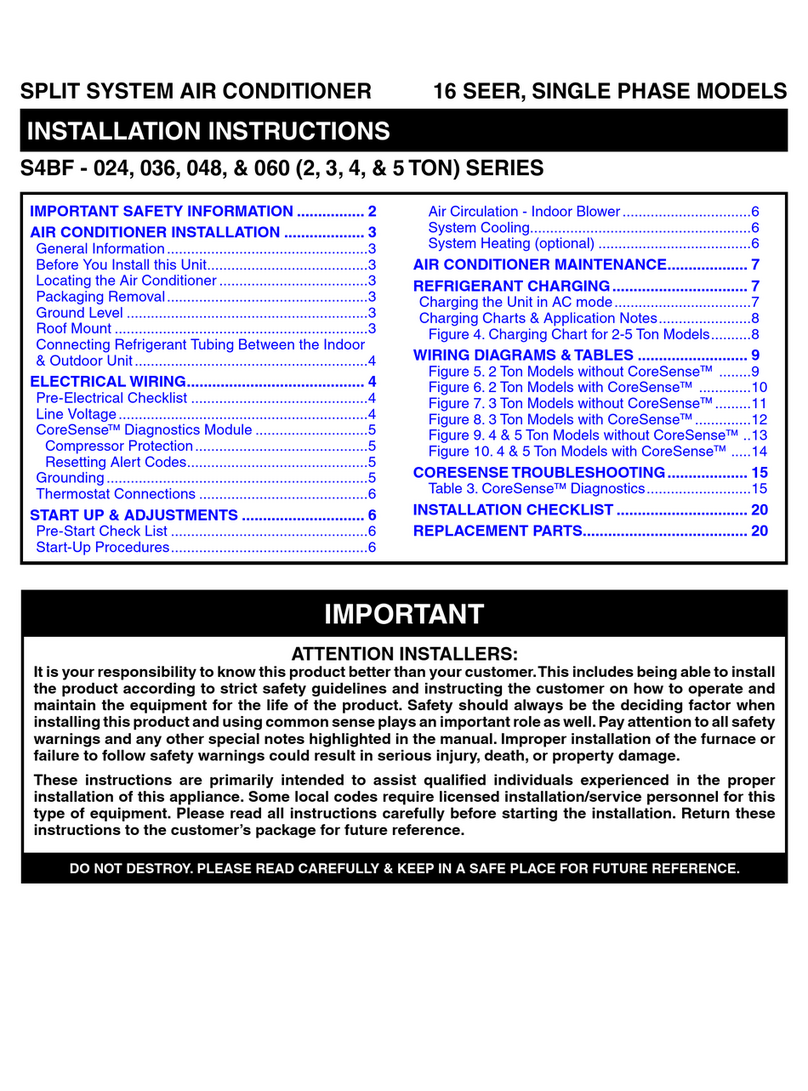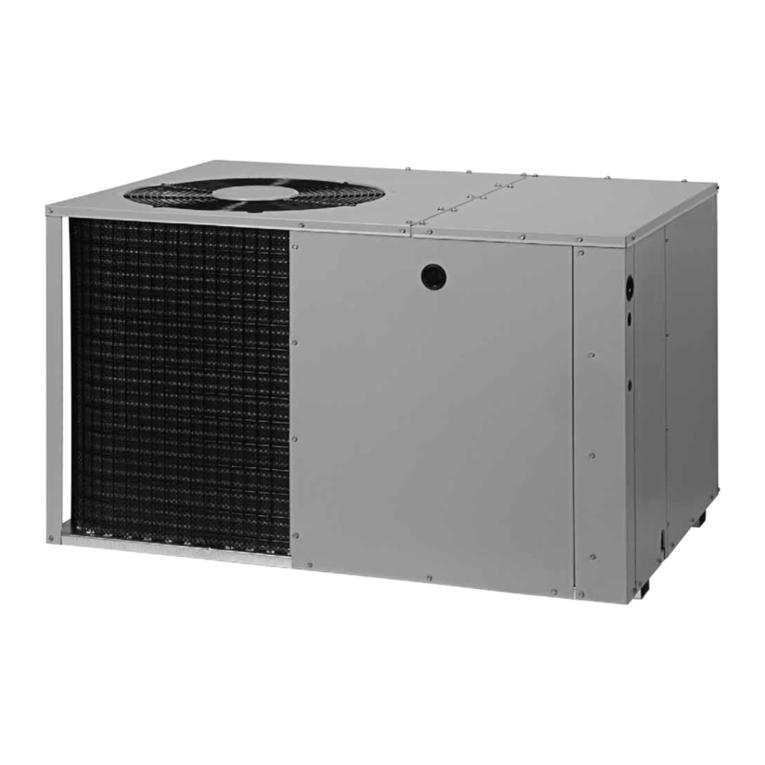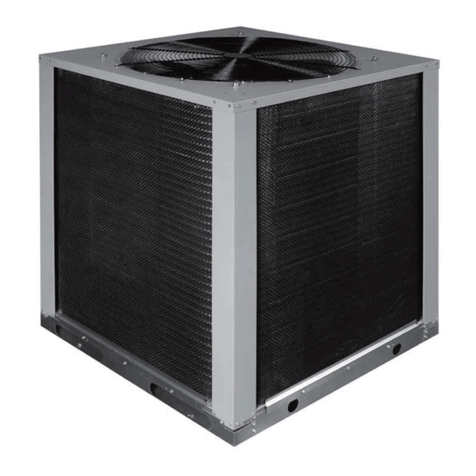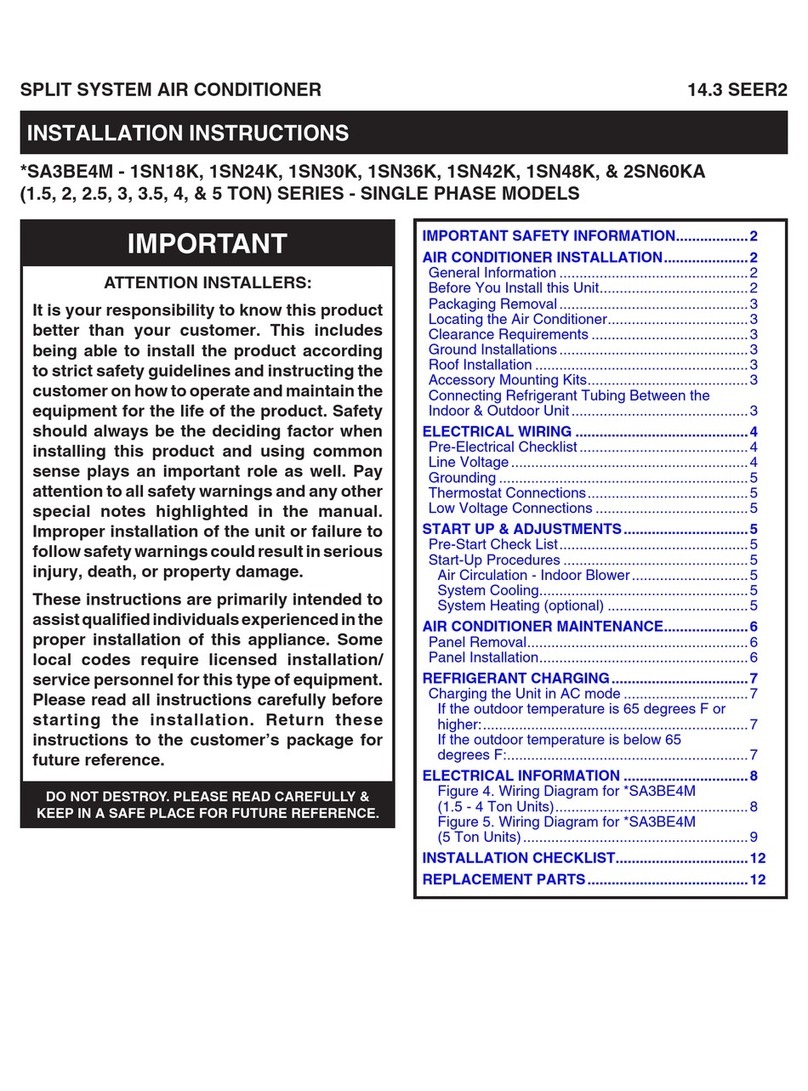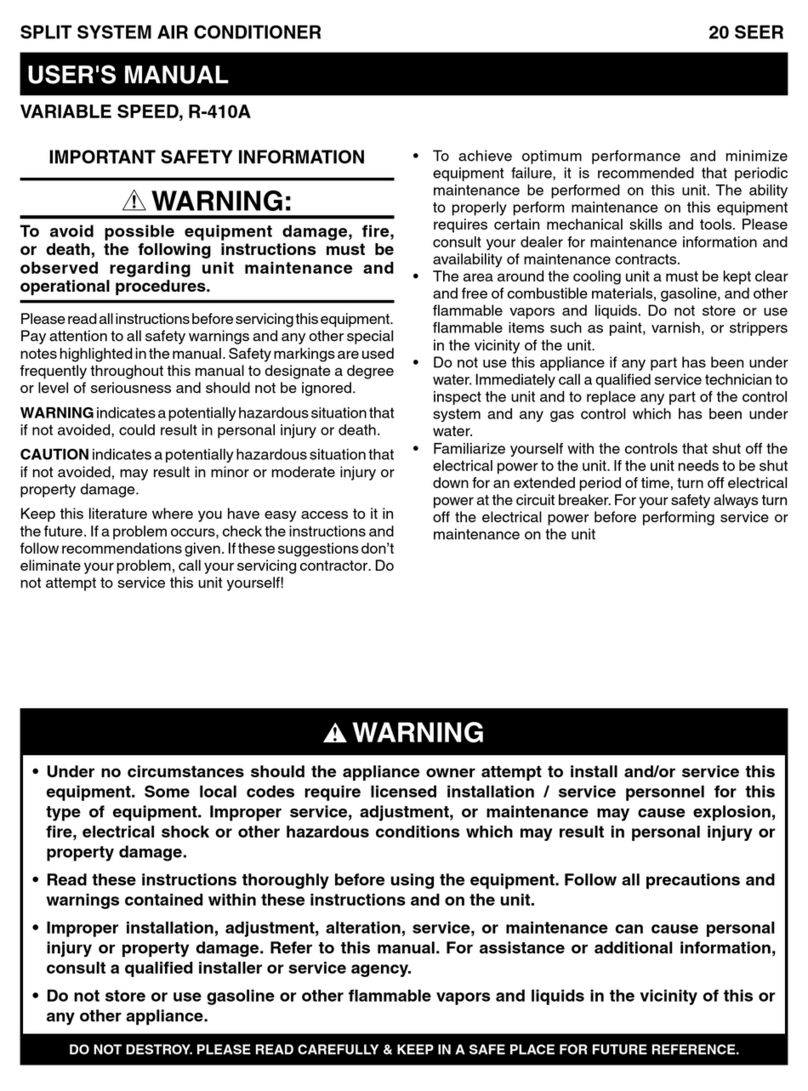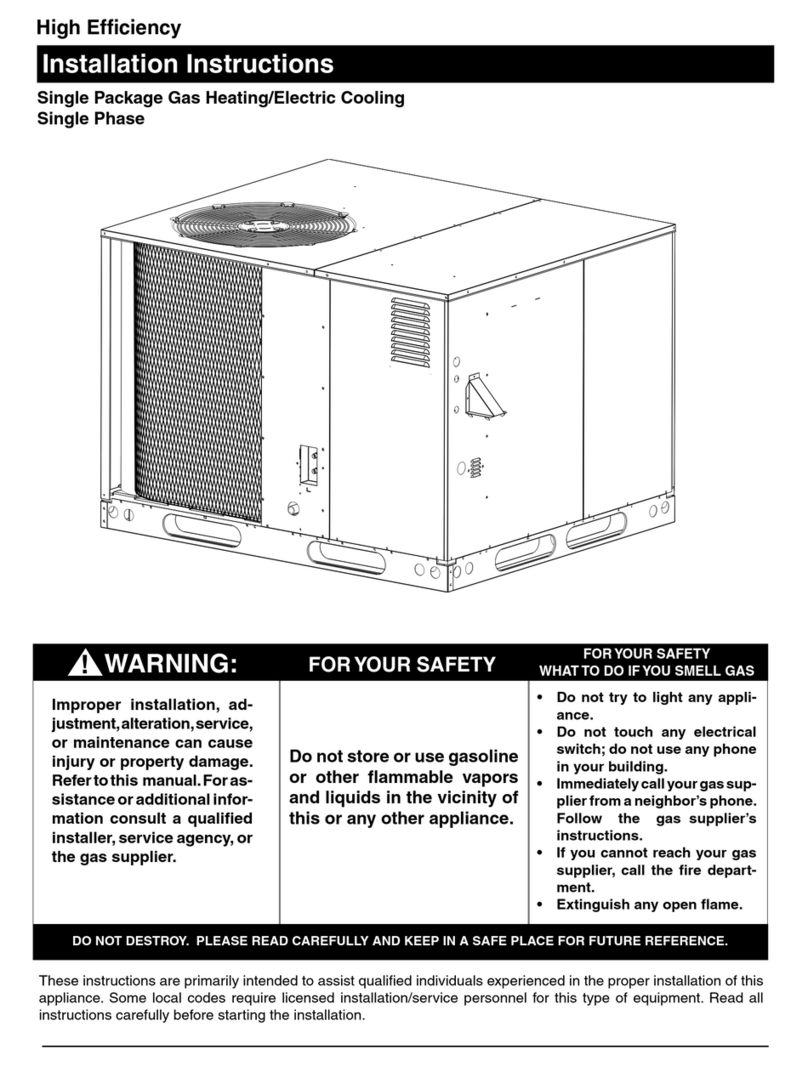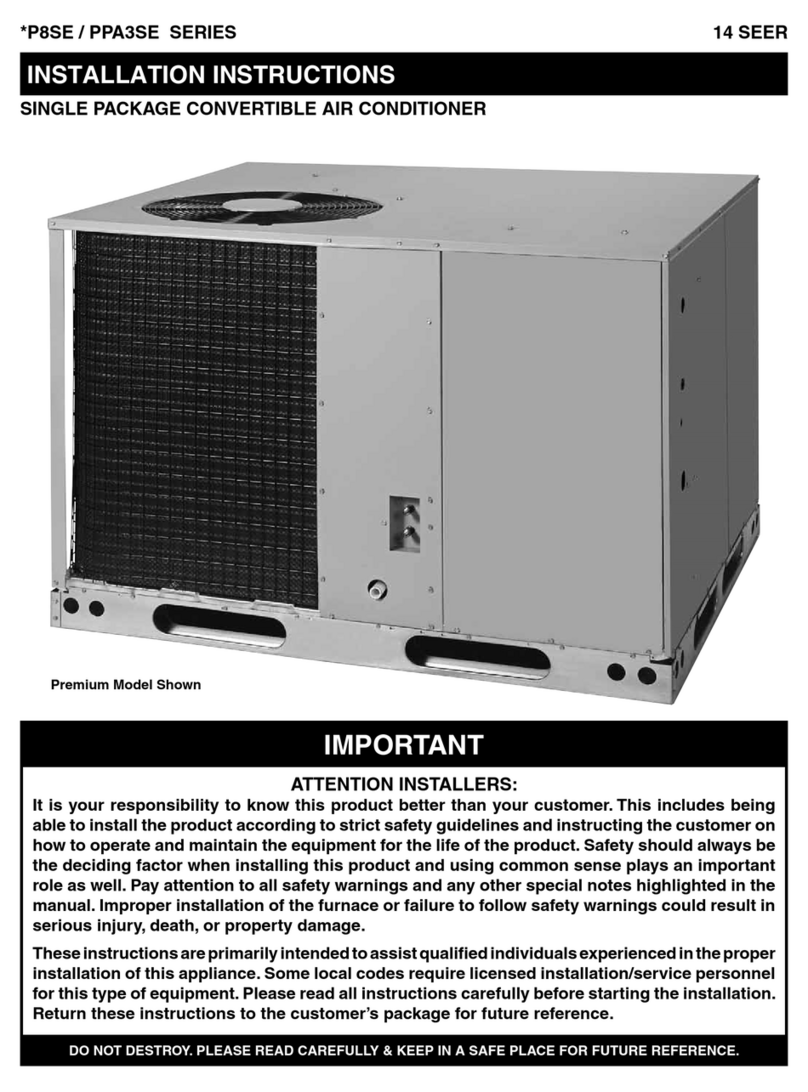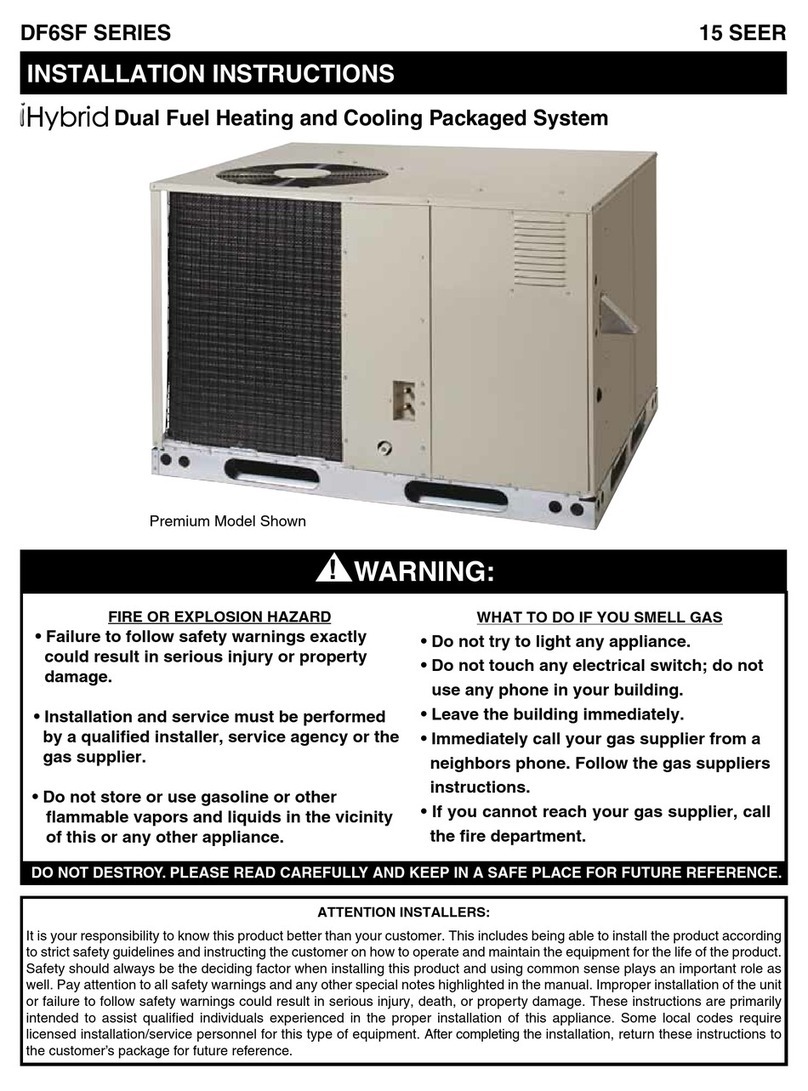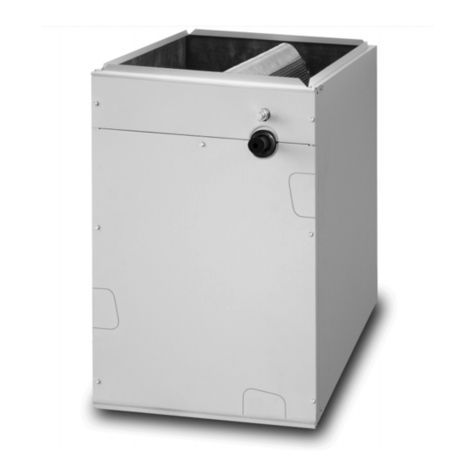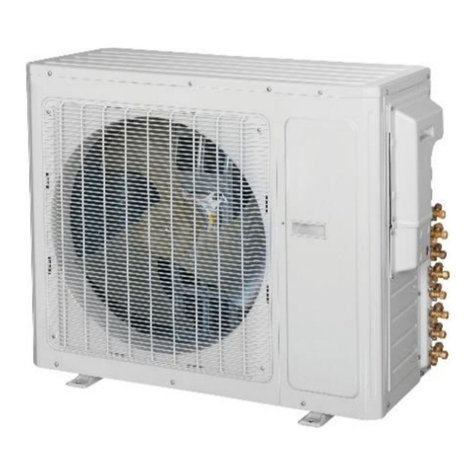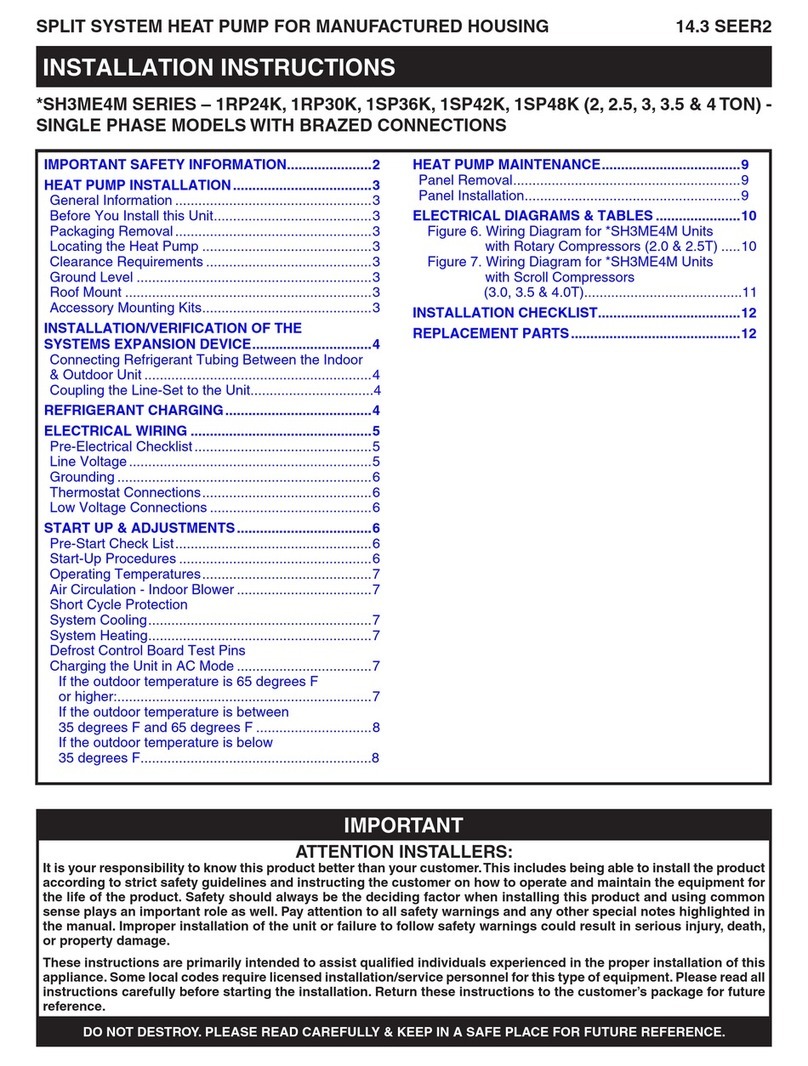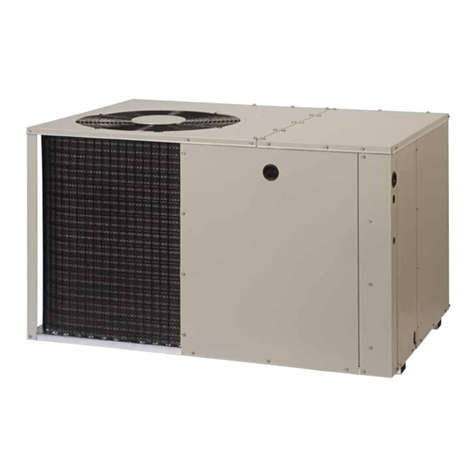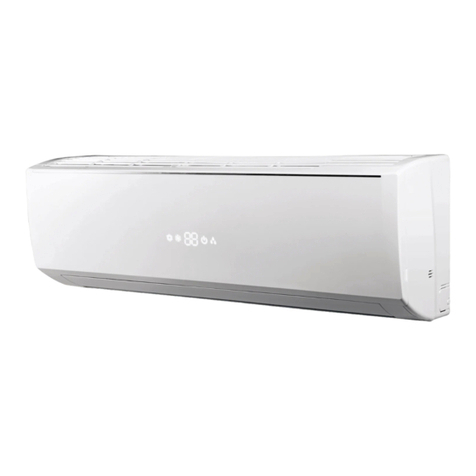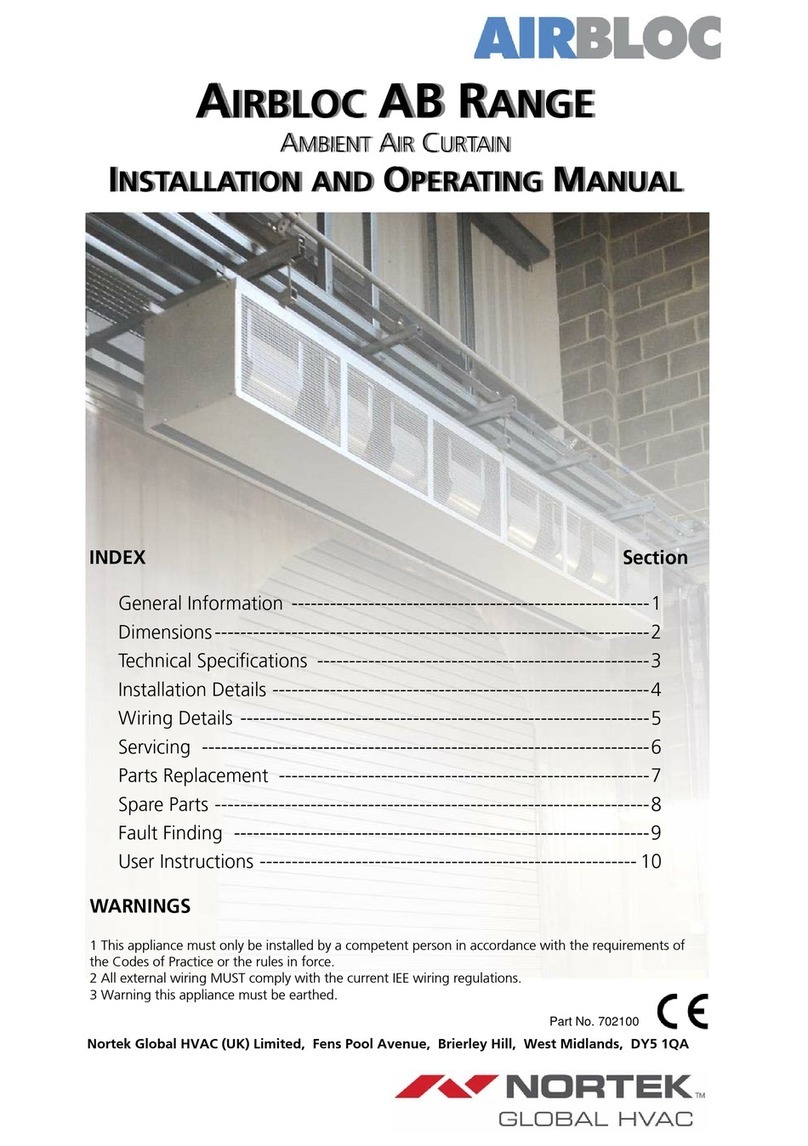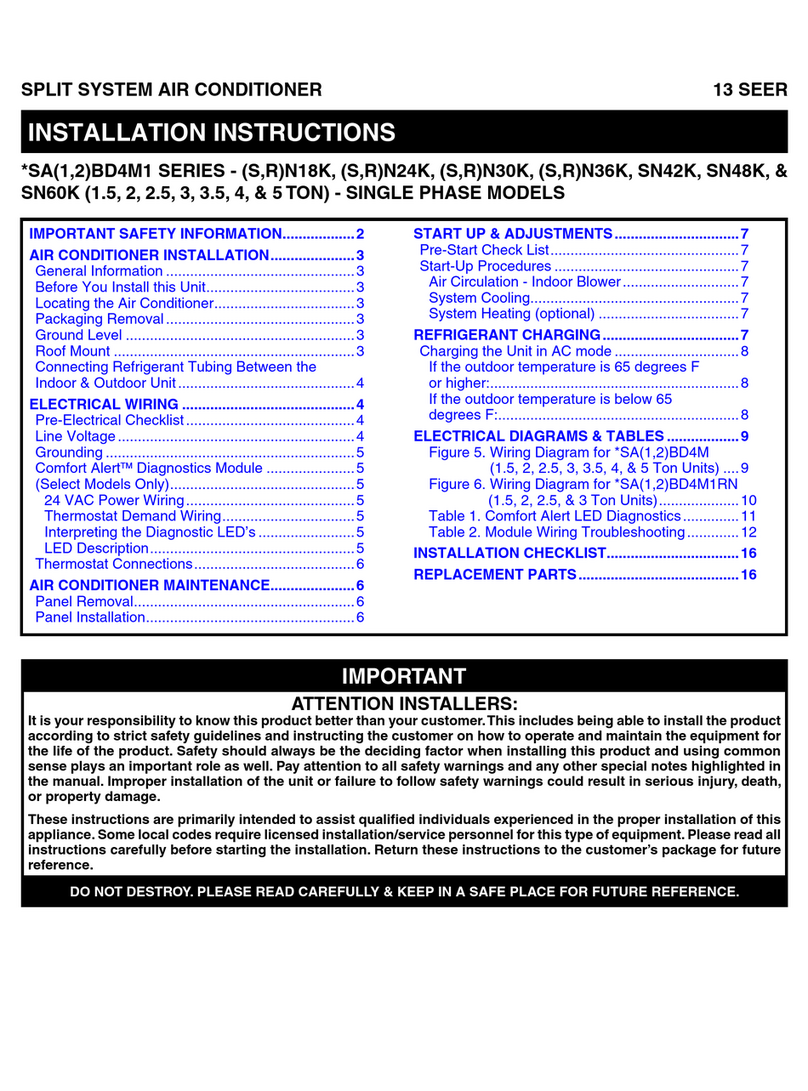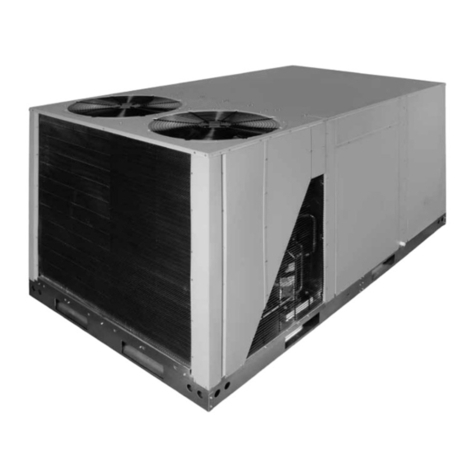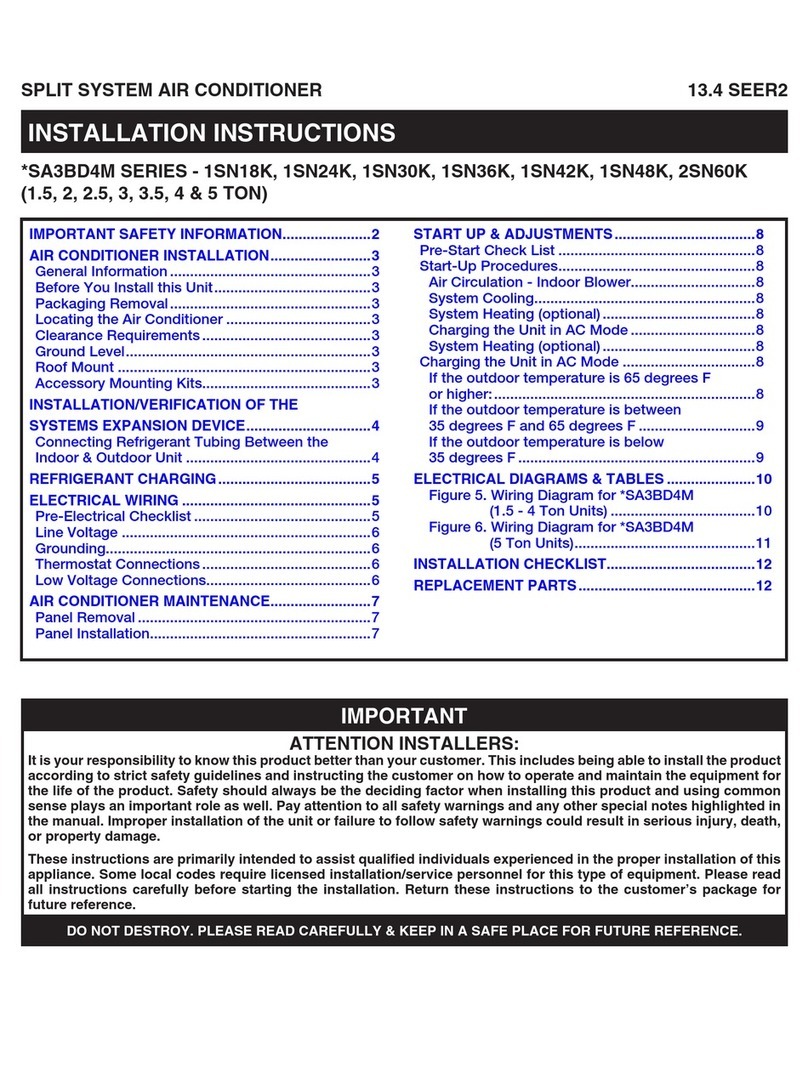
7
REFRIGERANT CHARGING
WARNING:
RSA3ME4M1 Split System Air Conditioners are
shipped charged with R410A refrigerant and
readyfor installation. If repairsmakeitnecessary
for evacuation and charging, it should only
be attempted by qualified trained personnel
thoroughly familiar with this equipment. Under
no circumstances should the owner attempt to
install and/or service this equipment. Failure to
comply with this warning could result in property
damage, personal injury, or death.
After refrigerant line connections are completed, it is required
that you leak check and evacuate the indoor section and
all line connections (using proper methods) before finalizing
the full system refrigerant charge.
• Refer to the Quick Reference Data sheet for additional
charging information for this unit with the approved
Nortek indoor units. For reference, these units are listed
in the AHRI Directory with all approved combinations
of indoor coils and units. Installing these outdoor units
on systems that combine it with an indoor coil or unit
not listed there, is not recommended. When approved
combinations of indoor and outdoor units are installed,
they should be set up to operate within the airflow and
other operational parameters prescribed in all of the units
provided instructions and technical specifications.
• Installation of this outdoor unit with other, non-listed
indoor unit combinations may require different airflows,
expansion devices, charge values and system setup from
the instructions provided here and with this unit. Nortek
does not recommend the use of this product in unlisted
combinations, and the system performance and efficiency
values of unlisted unit combinations may be different than
the listed product combinations.
• The refrigerant charge can be checked and adjusted
through the service ports provided external to the outdoor
unit. Use only gage line sets which have a “Schrader”
depression device present to actuate the valve.
• An automatic high-pressure switch is factory-installed
installed in these units and is located on the discharge
line after the unit's compressor. This switch is designed
to protect the system when very high pressures occur
during abnormal conditions. Under normal conditions, the
switch is closed. If the system pressure rises to 650 psig,
then the switch will open and de-energize the contactor
coil in the outdoor unit. The switch will close again once
the liquid pressure decreases to 460 psig and allow the
unit to restart.
Charging the Unit in AC mode
If the outdoor temperature is 65 degrees F or higher:
After completing the refrigerant line connections, leak
checking the system, and evacuating the indoor section
and all line connections (using proper methods), perform
the following steps:
1. Determine the recommended charge addition (if applicable)
for the system being installed. This information is in the
unit’s QRD (Quick Reference Data sheet).
2. Calculate the amount of additional refrigerant needed for
the line set length of the actual installation. This information
is on the first page of the unit’s QRD (Quick Reference
Data sheet).
3. Weigh in the additional charge amounts determined by
step 1 and 2 above.
4. Adjust the charge to match the superheat (for fixed orifice
systems) or subcooling (for TXV systems). There are three
different resources for doing this:
a.) The chargecalculator.com website. This will walk
you through the charging process step by step.
b.) The charging tables on the inside of the outdoor
unit’s electrical box cover panel. These tables
provide superheat targets for fixed orifice systems
and subcooling targets for TXV systems. The system
should be charged so that the measured superheat/
subcooling are within 1 degree F of the target listed
in the table.
For fixed orifice systems:
• If your measured superheat at the suction valve is
LESS THAN the recommended superheat value
in the table then REMOVE refrigerant.
• If your measured superheat at the suction valve
is GREATER THAN the recommended superheat
value in the table then ADD refrigerant.
For TXV systems:
• If your measured subcooling at the liquid valve
is LESS THAN the recommended subcooling
value in the table then ADD refrigerant.
• If your measured subcooling at the liquid valve is
GREATER THAN the recommended subcooling
value in the table then REMOVE refrigerant.
c.) The charging tables in the Supplemental Charging
Information, can be found online in the literature
library. The tables can also be accessed by scanning
the QR code on the unit’s electrical panel. The
pressures listed in these tables are for reference
only and are to be used in troubleshooting a system.
The system should be charged to match the
superheat or subcooling targets as previously
noted and not to match the system pressures.
Follow the same procedure described in 4b above.
If the outdoor temperature is below 65 degrees F:
After completing the refrigerant line connections, leak
checking the system, and evacuating the indoor section
and all line connections (using proper methods), perform
the following steps:
1. Determine the recommended charge addition (if
applicable) for the system being installed. This information
is in the unit’s QRD (Quick Reference Data sheet).
2. Calculate the amount of additional refrigerant needed for
the line set length of the actual installation. This information
is on the first page of the unit’s QRD (Quick Reference
Data sheet).
3. Weigh in the additional charge amounts determined by
step 1 and 2 above.
4. Return to the system when the outdoor temperature is
65 degrees F or higher and follow the steps defined in
step 4 of the “If the outdoor temperature is 65 degrees F
or higher” section above.

